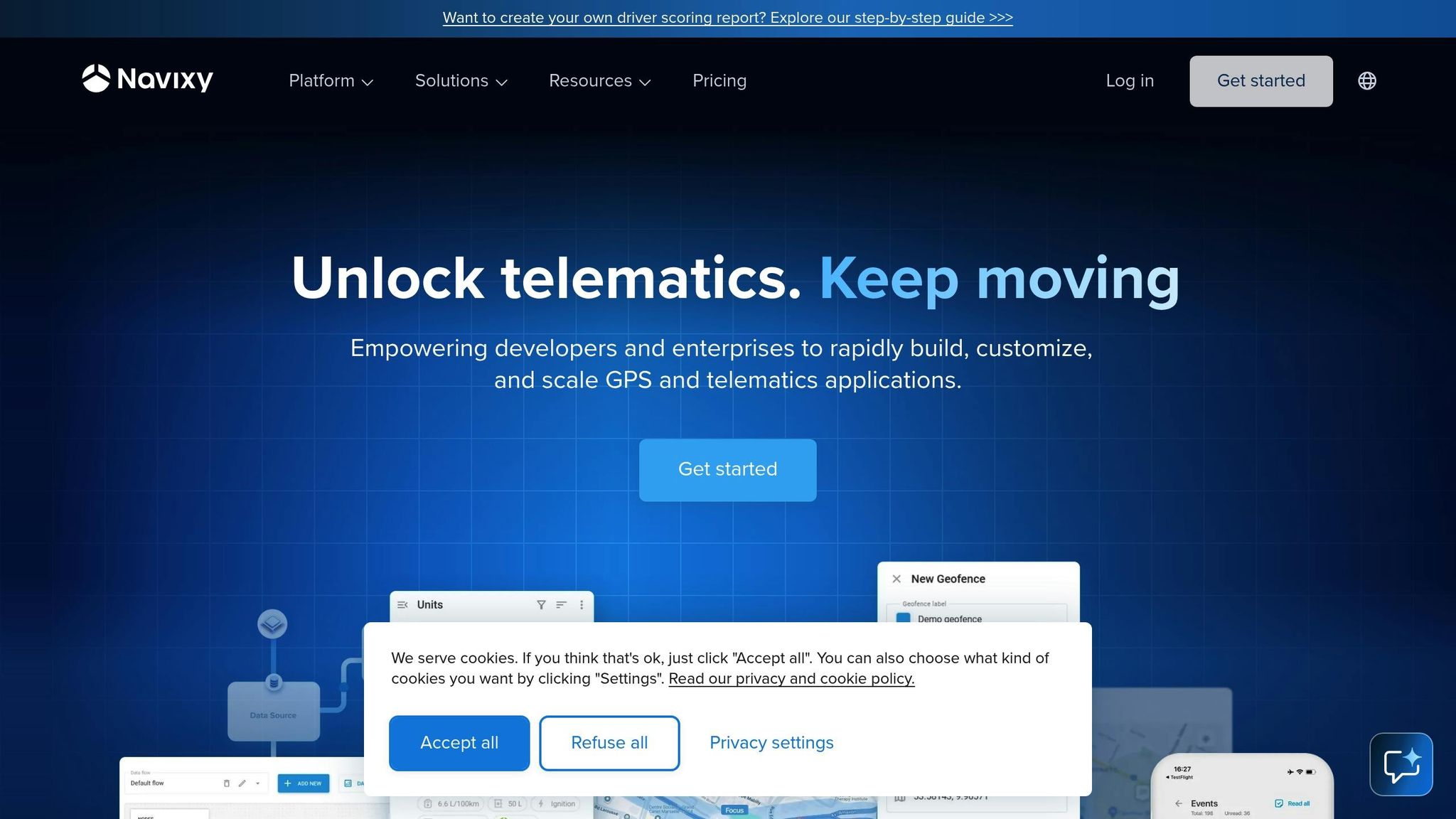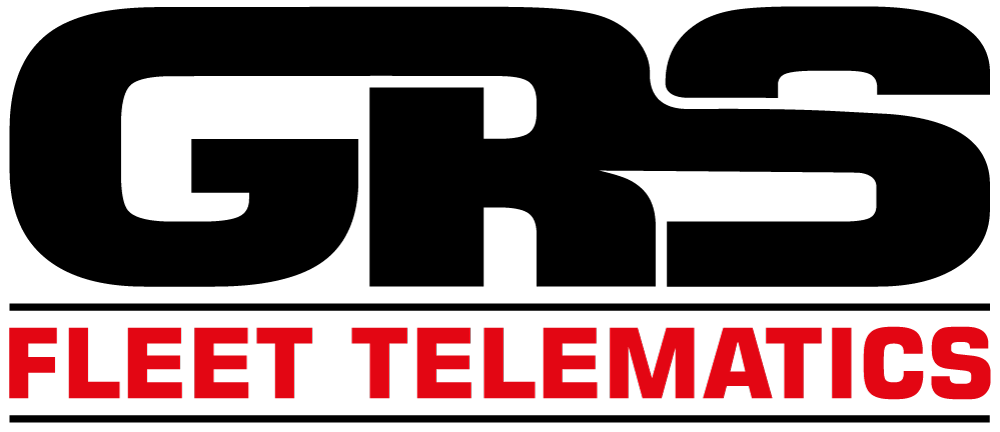How White Label Telematics Supports Fleet Growth
Explore how white label telematics empowers fleet growth, enhances brand identity, and ensures compliance with UK regulations.

White label telematics helps UK businesses grow their fleets while maintaining their brand identity. By offering rebranded, customisable platforms, companies can integrate advanced tracking tools without relying on third-party branding. This approach ensures a consistent user experience, improves efficiency, and keeps costs predictable - key for scaling operations.
Key Points:
- Custom Branding: Present telematics systems under your own brand to build trust and strengthen customer loyalty.
- Scalability: Easily expand fleet operations with platforms that handle everything from real-time tracking to compliance.
- Cost-Saving Features: Reduce fuel costs, accidents, and admin expenses while avoiding high R&D costs.
- Compliance Tools: Simplify adherence to UK regulations like Clean Air Zones and GDPR.
- Quick Setup: Launch services in weeks, not months, with affordable options starting at £7.99/month per vehicle.
With over 90% of UK fleets expected to adopt telematics by 2026, investing in white label solutions positions businesses for growth while staying in control of their operations and branding.
White label GPS tracking benefits | Navixy

Key Benefits of White Label Telematics for Fleet Operations
White label telematics is reshaping how businesses manage fleet expansion, offering advantages that go beyond traditional solutions. It streamlines operations in areas like scalability, branding, and cost control, making it an appealing choice for modern fleet management.
Scalability and Efficiency
One of the standout features of white label telematics is how easily it scales. Unlike traditional systems that often require complex adjustments when expanding fleets, white label platforms make growth straightforward. Whether you're managing a handful of vehicles or thousands, adding new ones is as simple as a few administrative updates.
The efficiency gains are hard to ignore. For instance, 35% of UK respondents reported improved efficiency after adopting GPS tracking solutions. White label telematics excels in areas like automated maintenance scheduling, real-time tracking, and monitoring driver behaviour. These tools help optimise routes, cut fuel costs, and simplify admin work, making fleet expansion not just manageable but also profitable.
Custom Branding and Building Customer Trust
For businesses wanting to maintain a strong market identity, custom branding is a game-changer. White label telematics allows companies to present dashboards, reports, and interfaces under their own branding, offering a seamless and professional experience that strengthens customer trust.
Take GRS Fleet Telematics as an example. Their white label option allows businesses to offer advanced features like dual-tracker technology and a 91% vehicle recovery rate under their own brand. This not only enhances customer confidence but also accelerates returns and improves cost efficiency.
Cost Savings and Quick Deployment
White label telematics also stands out for its cost advantages. By bypassing the need for heavy investment in research and development, businesses avoid the high upfront costs tied to building hardware, software, and infrastructure. Some solutions boast a staggering 2,965% return on investment, with payback periods as short as 0.3 months.
Another benefit is the speed of deployment. Instead of spending months on development, businesses can launch fully operational telematics services in just weeks. This quick turnaround means more time and resources can be directed towards sales, marketing, and customer support - areas that directly fuel growth.
The financial perks are clear. UK fleet operators have reported monthly savings of £1,224.52 and yearly savings of £14,694.25 by optimising fleet management. With GRS Fleet Telematics offering hardware starting at £35 and monthly services at £7.99 per vehicle, businesses can confidently plan their growth without worrying about hidden costs or scaling challenges. This makes it easier to expand while keeping expenses predictable.
Key Features of a Scalable White Label Telematics Solution
A scalable white label telematics solution isn’t just about keeping up with operations - it’s about staying ahead. By combining real-time tracking, enhanced security, advanced analytics, and compliance with UK regulations, these systems ensure efficiency, safety, and control while supporting growth.
Real-Time Tracking and Security
Real-time GPS tracking offers instant updates on vehicle location, speed, and status, accessible via both web and mobile platforms. But these systems go beyond simple tracking. Security features like dual-tracker technology - pairing a primary hardwired tracker with a hidden Bluetooth backup - add a vital layer of asset protection. For instance, GRS Fleet Telematics has achieved a 91% vehicle recovery rate by using this method.
Additional security measures include real-time theft alerts, engine immobilisation to prevent unauthorised use, and geofencing. With geofencing, fleet managers can create virtual boundaries and receive immediate alerts when vehicles cross these zones. These tools not only safeguard assets but also lay the groundwork for more detailed operational insights.
Driver Analytics and Fleet Optimisation
Driver behaviour monitoring transforms raw data into actionable insights. Metrics like harsh braking, speeding, rapid acceleration, and excessive idling allow for targeted coaching to cut costs and improve safety.
Predictive maintenance is another standout feature. By continuously analysing vehicle health, mileage, and usage patterns, the system can predict when servicing is needed, helping to prevent breakdowns and reduce unplanned downtime. This approach extends vehicle lifespan while keeping operations running smoothly. Integrated route planning further optimises fleet performance by analysing traffic, delivery schedules, and vehicle locations to recommend the most efficient routes, saving on fuel and driver hours.
Compliance with UK Regulations
Navigating the UK’s regulatory landscape is no small task for fleet operators. Telematics solutions simplify this with features like electronic logging of driver hours to ensure compliance with working time regulations. Automated record-keeping also streamlines audits and reduces administrative overhead.
Adhering to Clean Air Zone requirements is another critical area. Non-compliant vehicles in London, for example, can face daily charges of up to £100, with HGVs over 12 tonnes risking penalties as high as £550. A telematics platform helps avoid these costs through efficient route planning and emissions tracking.
Data protection is equally crucial under GDPR. These systems use encryption, strict access controls, and transparent data handling to ensure operators retain control of their data. Regular security audits and clear data retention policies further build trust and maintain compliance.
Finally, seamless integration with existing business systems - such as CRM, ERP, and payroll tools - is essential for scalability. Open APIs and compatibility with a variety of hardware, from OBD-II trackers to dashcams, provide the flexibility needed for future expansion. These features ensure that as operations grow, control and compliance remain firmly intact.
Steps to Implement White Label Telematics
Introducing a white label telematics solution requires thoughtful planning and precise execution. The process can be broken down into three main phases: assessing your fleet’s needs and choosing the right provider, customising the platform to align with your brand, and deploying the system effectively while training your team.
Evaluating Business Needs and Choosing a Provider
Start by thoroughly assessing your fleet’s current operations and long-term goals. Think about the type and size of your fleet - whether it’s delivery vans, HGVs, or a combination - and pinpoint your priorities. Are you aiming to cut down on fuel expenses, enhance driver safety, or ensure compliance with UK regulations? Defining these objectives will guide your decisions.
Bring together key stakeholders from departments like operations, IT, and compliance to ensure all critical requirements are captured. When evaluating potential providers, focus on their ability to offer full customisation and rebranding, their track record for reliability, and the strength of their security measures. For fleets operating in the UK, it’s essential to confirm that the provider’s compliance tools meet local regulatory standards.
Cost is another important factor, especially for businesses looking to grow. Transparent pricing models, such as GRS Fleet Telematics’ solutions starting at £7.99 per vehicle per month, can simplify budgeting and decision-making.
Once you’ve selected a provider that meets your needs, the next step is to customise the system to reflect your brand.
Customisation and Branding
Customisation is where a standard telematics platform becomes uniquely yours. Adjust the interface, dashboards, and reports to match your company’s branding, including colours, logos, and fonts. Configure user roles and notifications to align with your team’s workflows, and extend these customisations to mobile apps and customer-facing portals to ensure a consistent experience.
Beyond digital branding, consider how your physical branding ties into the telematics system. For example, ensure that all data is presented in formats familiar to UK users, such as pounds sterling for costs and the UK’s standard date and time formats. This attention to detail reinforces your company’s identity while maintaining a professional and user-friendly system.
Deployment and Staff Training
Deployment begins with the installation of hardware. Professional installation ensures that tracking devices and sensors are correctly fitted and operational. After hardware setup, integrate the telematics platform with your existing systems, such as CRM, ERP, or payroll software. This integration enables real-time data sharing, providing a seamless flow of information across your operations. Most providers offer technical support during this phase to address any connectivity or setup issues.
Training your staff is a crucial step for successful adoption. Provide role-specific training that covers system navigation, interpreting dashboards, responding to alerts, and understanding compliance notifications. Start with a pilot programme involving a small group of users to identify and resolve any issues before rolling out the system to the entire team.
Finally, ensure ongoing support by leveraging 24/7 assistance and scheduling regular updates to keep the system aligned with your evolving fleet needs.
With the UK fleet management software market projected to surpass £1.1 billion by 2033 and more than 90% of UK commercial fleets expected to adopt telematics by 2026, implementing a white label telematics solution now positions your business to thrive in this growing market.
Maintaining Brand Identity and Control
Expanding on the advantages of custom branding and scalable deployment, maintaining your brand identity goes hand in hand with having full control over your data and operations. White label telematics allows your fleet services to seamlessly integrate into your brand, presenting it as a unified solution. This not only strengthens customer relationships but also reinforces your professional image, all while ensuring you retain complete control over fleet data and day-to-day operations.
Custom Dashboards and Reports
White label telematics lets you fully personalise the user experience by tailoring dashboards, reports, and interfaces with your logos, colour schemes, and branding. Every interaction reflects your brand, from key operational metrics like vehicle usage and driver behaviour to financial insights such as cost analysis and compliance. These customisations also align with UK standards - think pounds, DD/MM/YYYY dates, and miles or kilometres - helping to solidify your brand identity across all platforms.
You can even extend these branded dashboards to client portals, offering real-time performance insights that carry your branding. UK fleet operators who’ve adopted branded telematics platforms have seen notable benefits, including improved customer trust and loyalty, with 35% reporting enhanced operational efficiency.
Customisation doesn’t stop at appearance; full ownership of data ensures your operations remain secure and adaptable.
Data Ownership and Security
One of the standout advantages of white label telematics is the full control it gives you over your fleet data. This is critical for meeting the requirements of the Data Protection Act 2018 and GDPR. Leading platforms provide tools for compliance, such as data anonymisation, audit trails, and consent management, alongside clear agreements for data processing that let you define retention and deletion policies.
Security is another cornerstone of these solutions. Features like encrypted data transmission, secure cloud storage, user access controls, and regular security audits ensure sensitive information - such as vehicle locations and driver details - remains protected. Full data control also allows seamless integration with systems like CRM, ERP, and payroll, enabling quick adaptation to regulatory or operational changes.
Take GRS Fleet Telematics as an example. Their platform combines custom branding options with advanced security features, including dual-tracker technology and an impressive 91% recovery rate for stolen vehicles. By offering compliance with UK regulations and robust data protection, GRS helps businesses maintain their brand identity and operational control while scaling their fleets. In a market where over 90% of UK commercial fleets are expected to adopt telematics by 2026, securing your data and brand identity now gives you a strong competitive edge.
Conclusion
White label telematics is proving to be a game-changer for UK fleet operators, offering a way to achieve growth while keeping control over operations and branding. These systems are driving measurable cost savings, which in turn help businesses reinvest and expand further.
One of the standout benefits is scalability. With the market expected to surpass £1.1 billion by 2033, white label solutions remove traditional growth hurdles, providing a solid infrastructure that can grow effortlessly - whether you’re running a small fleet of five vans or managing hundreds.
In today’s competitive environment, maintaining your brand identity and operational control is critical. Offering telematics services under your own branding - complete with custom dashboards, bespoke reports, and personalised interfaces - builds stronger customer connections and ensures you retain control of vital fleet data. This becomes even more crucial as regulations tighten. For instance, non-compliant vehicles in London face daily charges of up to £100, while HGVs over 12 tonnes could incur penalties as high as £550.
A prime example is GRS Fleet Telematics, which demonstrates how white label solutions can deliver both immediate benefits and sustained growth. Their platform blends advanced security, branding flexibility, and compliance tools tailored to UK regulations. It’s accessible for smaller businesses but also scalable for larger operations. These efficiencies enable businesses to thrive in a fast-changing market.
For fleet operators, the time to act is now. By investing in white label telematics with a focus on true customisation, strong security, and proven compliance features, you’ll position your business to take full advantage of the sector’s rapid evolution. Choose a solution that not only fuels your growth but also safeguards your brand’s identity.
FAQs
How can white label telematics help businesses grow their fleet while keeping their brand identity intact?
White label telematics solutions provide a smart way for businesses to grow their fleet operations while keeping their brand identity intact. These platforms are fully customisable, allowing companies to rebrand tracking systems and interfaces so they seamlessly match their existing branding.
With GRS Fleet Telematics, businesses gain access to advanced tools like van tracking and dual-tracker technology, all while retaining complete operational control. This setup not only helps improve security and efficiency but also ensures your brand remains the focal point throughout.
How can white label telematics help reduce costs and improve fleet management efficiency?
White label telematics solutions are a smart way for businesses to cut costs while improving how their fleets operate. These systems come packed with features like real-time vehicle tracking, driver behaviour monitoring, and fleet performance analytics. Together, these tools help businesses plan better routes, use less fuel, and boost overall productivity.
On top of that, security is a major focus. With advanced measures like dual-tracker technology - boasting an impressive 91% recovery rate for stolen vehicles - businesses can significantly reduce losses caused by theft. The added convenience of mobile app integration means managers can oversee their fleets anytime, anywhere, offering greater control and adaptability. Plus, with budget-friendly pricing options, scaling operations becomes much more manageable without sacrificing quality or performance.
How do white label telematics solutions help businesses comply with UK regulations?
White label telematics solutions, like those offered by GRS Fleet Telematics, equip businesses with the tools they need to comply with UK regulations. These systems help monitor and enhance driver behaviour, ensuring safety standards are consistently met. They also feature real-time GPS tracking, geofencing, and in-depth reports covering fuel usage, vehicle maintenance, and performance metrics - all crucial for staying on the right side of the law.
By providing greater oversight and control, these solutions allow businesses to manage their fleets more efficiently while maintaining compliance with legal obligations in the UK.
